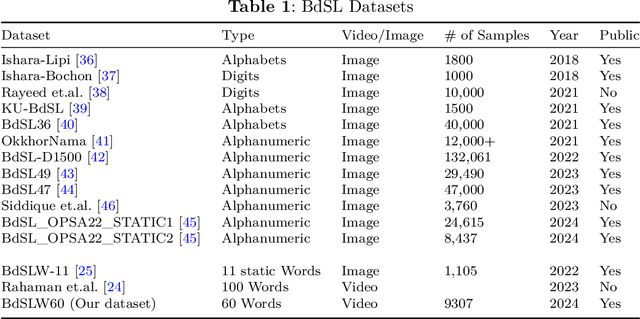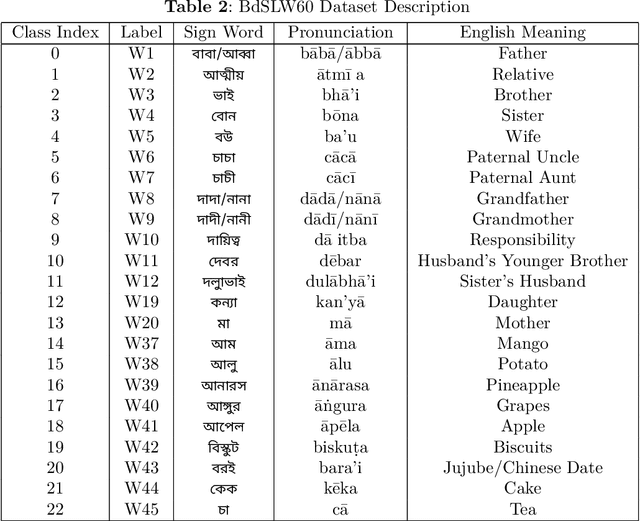BdSLW60: A Word-Level Bangla Sign Language Dataset
Paper and Code
Feb 13, 2024



Sign language discourse is an essential mode of daily communication for the deaf and hard-of-hearing people. However, research on Bangla Sign Language (BdSL) faces notable limitations, primarily due to the lack of datasets. Recognizing wordlevel signs in BdSL (WL-BdSL) presents a multitude of challenges, including the need for well-annotated datasets, capturing the dynamic nature of sign gestures from facial or hand landmarks, developing suitable machine learning or deep learning-based models with substantial video samples, and so on. In this paper, we address these challenges by creating a comprehensive BdSL word-level dataset named BdSLW60 in an unconstrained and natural setting, allowing positional and temporal variations and allowing sign users to change hand dominance freely. The dataset encompasses 60 Bangla sign words, with a significant scale of 9307 video trials provided by 18 signers under the supervision of a sign language professional. The dataset was rigorously annotated and cross-checked by 60 annotators. We also introduced a unique approach of a relative quantization-based key frame encoding technique for landmark based sign gesture recognition. We report the benchmarking of our BdSLW60 dataset using the Support Vector Machine (SVM) with testing accuracy up to 67.6% and an attention-based bi-LSTM with testing accuracy up to 75.1%. The dataset is available at https://www.kaggle.com/datasets/hasaniut/bdslw60 and the code base is accessible from https://github.com/hasanssl/BdSLW60_Code.
 Add to Chrome
Add to Chrome Add to Firefox
Add to Firefox Add to Edge
Add to Edge